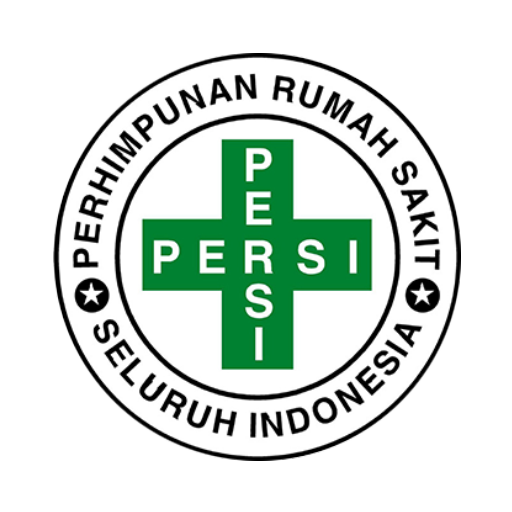Pengaruh Kepemimpinan Manajemen Rumah Sakit Dalam Iklim Keselamatan Pasien di Rumah Sakit Sentra Medika Cibinong Tahun 2013
Abstract
Keywords
Full Text:
PDFReferences
(1) Al-Ahmadi, Somaia. (2011). Patient Safety Climate and Leadership in the Emergency Department. University of Alberta (Canada), ProQuest, UMI Dissertations Publishing, 2011.
(2) Buck, Michael Anthony. (2011). Proactive Personality and Big Five Traits in Supervisors and Workgroup Members: Effects on Safety Climate and Safety Motivation. Dissertation Doctor of Philosophy in Applied Psychology, Portland State University.
(3) Conchie, Stacey, M. (2013). . Journal of Occupational Health Psychology : Transformational Leadership, Intrinsic Motivation, and Trust: A Moderated-Mediated Model of Workplace Safety .American Psychological Association 2013, Vol. 18, No. 2, 198 –210.
(4) Departemen Kesehatan RI. (2006). Panduan Nasional Keselamatan Pasien Rumah Sakit (Patient Safety).
(5) Fasset, William E. (2011). Educating For safety : Key Performance Outcomes of Patient Safety Curricula: Root Cause Analysis, Failure Mode and Effects Analysis, and Structured Communications Skills. College of Pharmacy, Washington State University.
(6) Havantri, Vieda. (2013). Impelmentasi Nilai-nilai sebagai upaya mewujudkan Identitas Organisasi. Tesis Program Magister Psikologi Profesi Minat Utama Psikologo Industri & Organisasi, Fakultas Psiklogi, Universitas Gajah Mada, Yogyakarta.
(7) Institute Of Medicine. (1999). Building a Safer Health System. Committee on Quality of Health Care in America . Institute Of Medicine National Academy Washington, D.C. 1999.
(8) Institute for Healthcare Improvement. (2005). Leadership Guide to Patient Safety : Resources and Tools for Establishing and Maintaining Patient Safety. Cambridge, UK. www.ihi.org
(9) Joint Commission International (JCI). (2006).Patient safety, essentials for health care. (International Edition). USA.
(10) Komite Keselamatan Rumah Sakit (KKP-RS) PERSI. (2008). Pedoman pelaporan insiden keselamatan pasien (IKP). Jakarta.
(11) Malhotra, Naresh.K.(2010). Questionnaire Design and Scale Development. Georgia Institute of Technology.
(12) Maynard, Laura. (2012). Patient safety First : Using Clinical Peer Coaching for Patient Safety.AORN Journal August 2012 Vol 96 No 2.
(13) Nieva, VF & Sorra J. (2003). Safety culture assessment: a tool for improving patient safety in healthcare organizations.www.qshc.com.
(14) Rachmawati, Emma. (2012) .Model pengukuran Budaya keselamatan Pasien di RS Reichers, A. E., and Schneider, B. (1990). Climate and culture: an evolution of constructs. In B. Schneider (Ed.), Organizational climate and culture. San Francisco: Jossey-Bass.
(15) Romano, Rebecca L. (2007). Motivational Predictors of Leadership Effectiveness: A Transformational Framework Exploring Motivation To Lead. Dissertation Doctor Of Philosophy in Psychology. Institute Of Technology, Chicago, Illionis.
(16) Shaw, Maureen. (2002). Rewarding Health & Safety. Canadian HR Reporter, Dec 2, 2002:15,21.pg.19.
(17) Singer, S.J., Gaba, D.M., Geppert, J.J., Sinaiko, A.D., Howard, S.K., &Park, K.C.(2003). The culture of safety: result of an organization-wide survey in 15 California Hospital. Journal of Quality Safety Health Care, 12, 112-118.
(18) Soo, Stephanie D.(2010). The Role of Champions in the Implementation of Patient Safety Practice Change. Thesis the degree of Master of Science Graduate Department of Health Policy, Management and Evaluation, University of Toronto
(19) The Health Foundation Inspiring movement. (2011).Evidence Scan : Measuring Safety Culture.United Kingdom. www.health.org.uk.
(20) Tseng, Hui & Yen Hua. (2008). Motivation of Participation in service Training Based on Problem solving: A Modified Delphi Study. A Dissertation Degree Doctor of Education in Educational
DOI: http://dx.doi.org/10.7454/arsi.v1i3.2179
Refbacks
- There are currently no refbacks.








